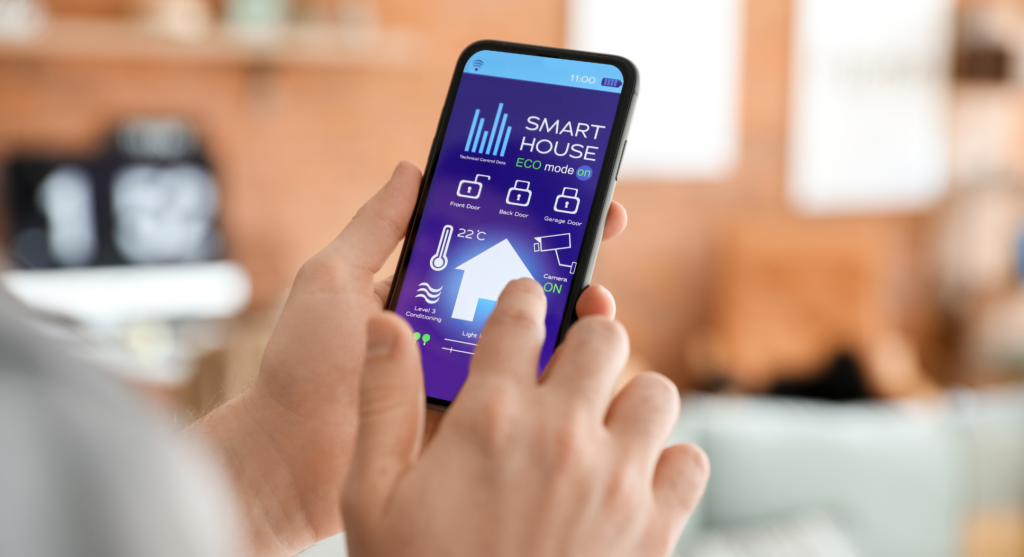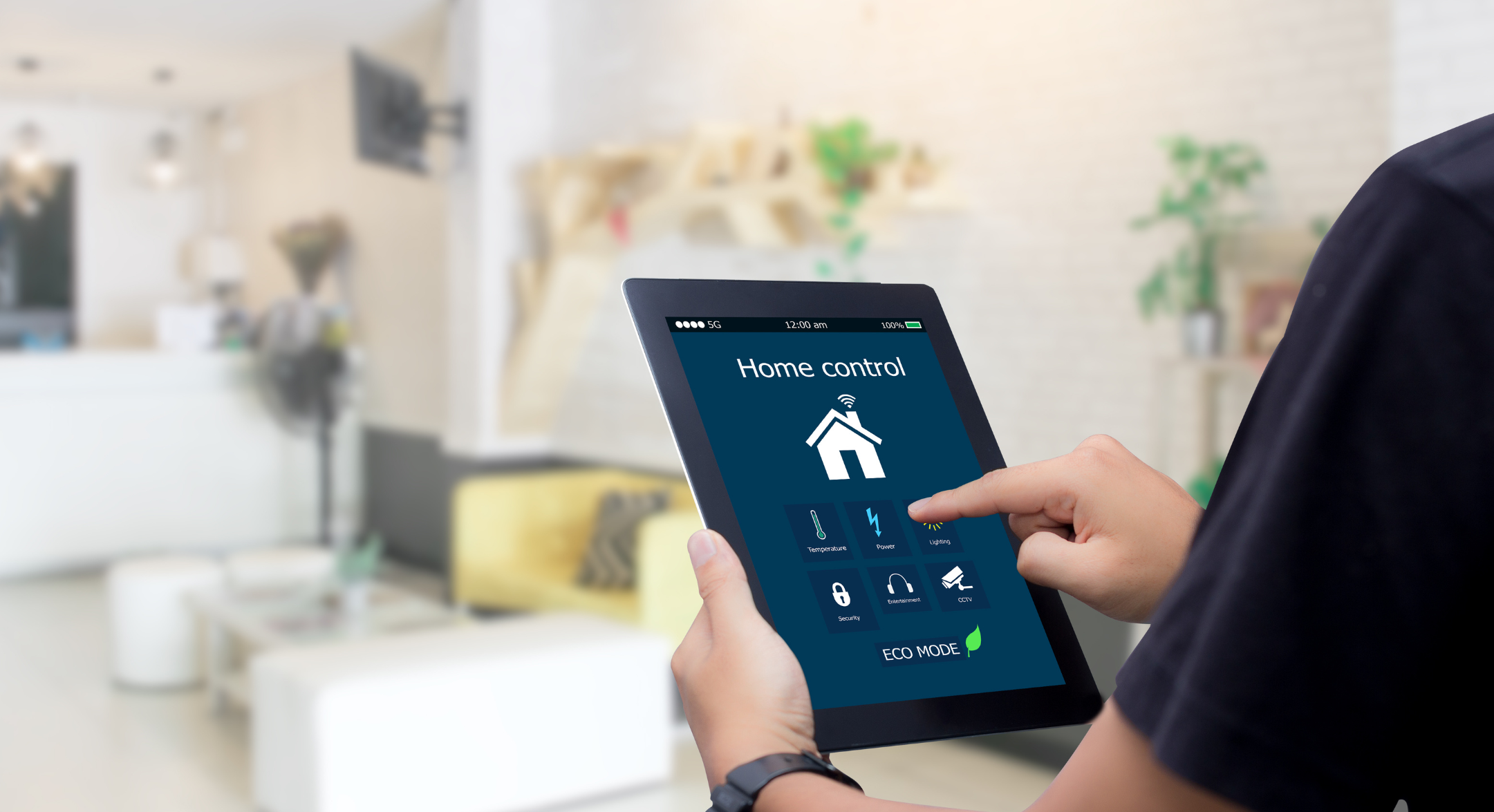Home automation is becoming increasingly popular because, in addition to being practical, it also offers security and efficiency for everyday life. For example, with devices such as smart bulbs, voice assistants and automated sensors, it is possible to create a connected and functional environment in a simple way.
What is Home Automation?
Home automation essentially refers to the use of technology to control devices and systems within a home remotely or automatically. In this way, with the integration of smart devices, it is possible to manage lighting, temperature, security and even household appliances through applications or virtual assistants. Thus, the domestic routine becomes much simpler and more efficient.
Benefits of Home Automation
- Comfort and practicality: After all, controlling your home with voice commands or with just a touch on your smartphone makes your day-to-day easier; Furthermore, this makes tasks more agile.
- Energy savings: Sensors and automatic programming help reduce consumption, which consequently reduces electricity bills; on the other hand, these savings also contribute to sustainability.
- Security: Real-time monitoring and alerts increase home protection, making it safer, especially when combined with surveillance systems.
- Property value increase: Smart homes are increasingly valued in the market, which can be a differentiator when selling; therefore, investing in automation can be advantageous.
- Sustainability: In addition, efficient energy use reduces environmental impacts, as it promotes conscious consumption.

Main Home Automation Devices
1. Smart Bulbs
Smart bulbs allow you to control your lighting via an app or voice command. Therefore, they offer several features, such as:
- Adjusting the intensity and color of the light, which consequently provides more comfort.
- Programming times for turning on and off, so as to avoid waste and optimize use.
- Integration with voice assistants, such as Alexa and Google Assistant, which makes use even easier; This way, the operation becomes more intuitive.
- Savings on electricity consumption, since it avoids unnecessary waste, benefiting both the user and the environment.
2. Voice Assistants
Voice assistants, such as Alexa, Google Assistant and Siri, make automation even more practical. In fact, they allow you to:
- Control connected devices with voice commands, which makes everything more intuitive and simple to use.
- Create automated routines that optimize daily tasks, as they allow you to schedule actions as needed.
- Play music, provide information and set reminders effortlessly, which, consequently, speeds up several activities.
- Make purchases online and control to-do lists, thus increasing practicality in everyday life and facilitating organization.
3. Security Sensors and Cameras
Smart security systems increase home protection. In particular, the most common devices include:
- Motion sensors: which automatically activate lights or alarms, thus increasing security.
- Surveillance cameras: which allow remote monitoring through applications, allowing you to keep an eye on everything even from a distance.
- Electronic locks: which allow you to unlock doors via password or biometrics, thus eliminating the need for keys.
- Smoke and gas leak sensors: which alert you to potential risks, thus preventing domestic accidents.
4. Smart Sockets and Switches
These devices allow you to remotely turn electronics on and off, in addition to programming the operation of specific appliances, thus optimizing energy consumption. Therefore, they offer:
- Remote control of electrical devices, which provides greater convenience.
- Energy consumption monitoring, allowing you to quickly identify possible waste.
- Programming schedules for appliance operation, which makes the environment more efficient and organized.
5. Smart Thermostats
Smart thermostats automatically adjust the room temperature based on user preferences and external conditions. In this way, they provide:
- Energy savings, adjusting the temperature as needed, which reduces waste; thus, consumption becomes more rational.
- Remote control via app, allowing adjustments at any time, even when you are not at home.
- Integration with voice assistants, which makes use even more practical and dynamic.
6. Automated Blinds and Curtains
Smart curtains allow you to adjust the input of natural light automatically, which consequently brings more comfort and energy efficiency. In addition, they offer:
- Programming of opening and closing times, contributing to a more pleasant environment.
- Remote control via application, facilitating operation and adjustment as needed.
- Integration with light sensors, which guarantee automatic and precise adjustments, in order to optimize the entry of light.
7. Smart Home Appliances
Home appliances such as refrigerators, stoves and washing machines connected to the internet bring more practicality to everyday life. On the other hand, they also enable:
- Remote control of functions, which provides more autonomy to the user.
- Monitoring of energy use and consumption, helping to save and maintain control.
- Preventive maintenance alerts, which prevent future damage to devices and extend their useful life.
How to Get Started with Home Automation

If you want to transform your home into a smart environment, then follow these steps:
1. Define Your Needs
First of all, carefully evaluate which areas of the house need automation. For example, you may want more comfort, security or energy savings; this way, your choice will be more targeted.
2. Choose an Ecosystem
To avoid incompatibilities and future problems, choose a system that is compatible with your devices, such as Google Home, Amazon Alexa or Apple HomeKit. This way, you ensure a more efficient and cohesive integration.
3. Start with Essential Devices
If you are just starting out, invest in a voice assistant and some smart light bulbs first. Later, add sensors and cameras as needed, which will allow for gradual system expansion.
4. Configure and Test
Install the devices correctly and customize the settings in the app. Also, test voice commands and schedule automated routines to optimize their use and ensure that everything is working as expected.
5. Expand Your Automation
As you get used to automation, expand it to other rooms and devices, such as thermostats, cameras, and appliances. This way, the integration between devices will be more complete and you will make the most of the benefits of technology.
Tips for Efficient Home Automation
- Use a stable Wi-Fi connection, as this prevents device failures and ensures continuous operation.
- Prioritize products that are compatible with each other, in order to promote better integration and avoid communication problems.
- Explore automated routines, such as turning on lights at dusk, to increase convenience and optimize the use of devices.
- Perform regular updates on applications, so that security and functionality are always maintained.
- Invest in backup power sources, such as uninterruptible power supplies, to prevent system failures in the event of a power outage, which ensures greater stability.
The Future of Home Automation
Technology is evolving rapidly, and as a result, home automation is set to become increasingly accessible and sophisticated. For example, some of the innovations that are gaining prominence include:
- Fully connected homes: That is, the integration between all devices in a more intuitive and automated way.
- Use of Artificial Intelligence: Which allows the learning of patterns and the automatic adaptation of the environment, making it smarter.
- Sustainability and renewable energy: Since there is a greater use of solar panels and energy storage, which contributes to more conscious consumption.
Home automation undoubtedly provides more comfort, savings and security. Therefore, with the popularization of technology, it is becoming increasingly accessible to transform your home into a smart environment. So, start with small devices and gradually expand as your needs change. Also, remember that investing in automation not only makes your daily routine easier, but also adds value to the property.
Did you like the tips? Therefore, share your experiences with home automation in the comments, so we can learn even more together!

